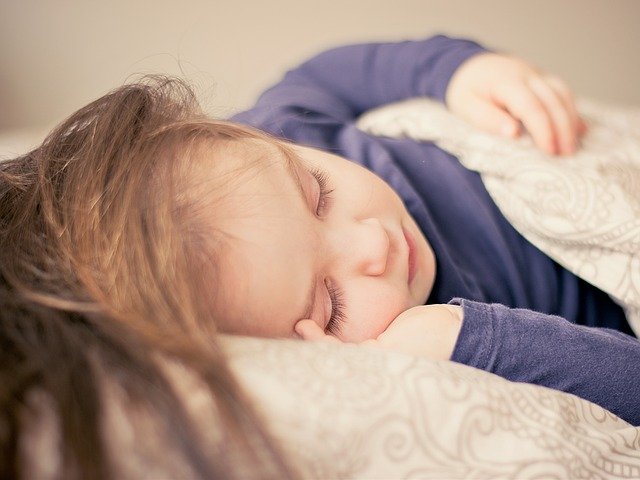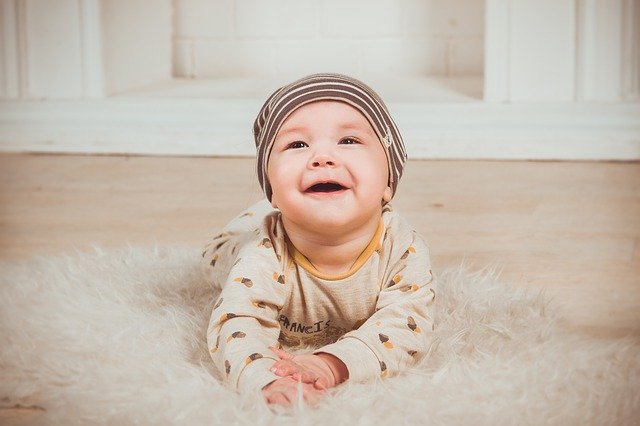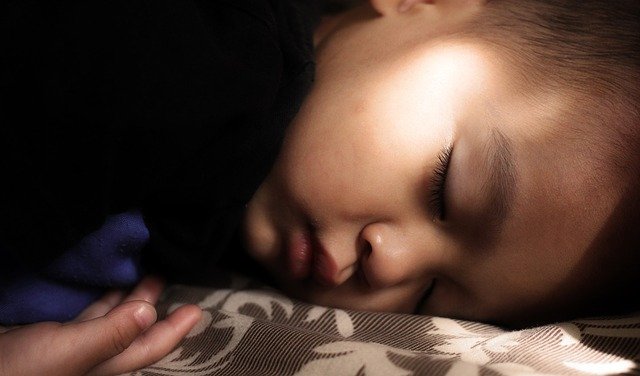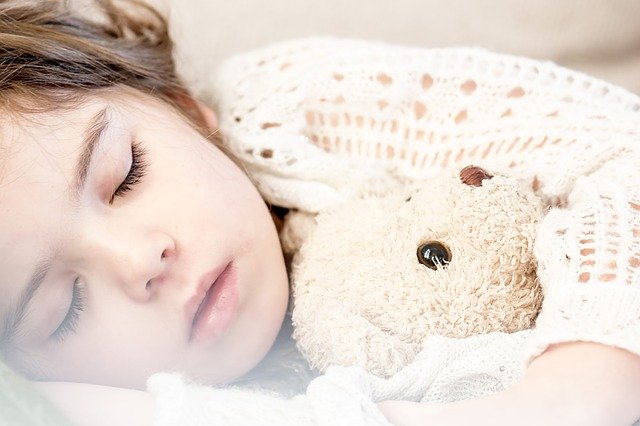If you are wondering ‘Do I need a baby monitor for a 2-year-old?’ then there is no straightforward answer here. You can ask several parents and chances are you will get different responses from each of them.
In this guide, we will discuss:
- How to prepare yourself and your baby when you stop using the baby monitor?
- 9 Reasons why you should continue using a baby monitor for your 2-year old or older toddler.
- And more…
Do I Need a Baby Monitor for a 2 Year Old?
Whether or not you need a baby monitor for a 2-year-old varies from baby to baby. There are no specific rules here. Some parents stop using the monitor once their child starts sleeping through the night. Others continue using it until the child is 2 years or older.
Do I Need a Baby Monitor for a 2 Year Old? – What Do Experts Say?

Many experts like Katie DiMonico ( sleep consultant) recommend using the baby monitor until your baby is about 4 years of age.
However, some pediatricians recommend stopping its use once the baby is about 6 months of age – or at least when the child starts sleeping through the night.
So, it is evident that there is no standard reply here. The answer will differ from baby to baby. In general, you can use a baby monitor for a 2-year old if you have a large house and your baby will be in a room far away from yours.
You can also use a baby monitor if you have two toddlers sleeping in the same room. This will help ensure there is no bickering. Also, a child with health issues can also benefit from monitoring as recommended by your doctor.
9 Reasons Why You Should Continue Using Baby Monitor for a 2 Year Old (Or Older Kids)

1. Helps sleep train your toddler
One of the biggest advantages of using a baby monitor is the ease of transition from co-sleeping or sleeping in a crib to sleeping in a big bed.
You can use the monitor to ensure that your toddler does not get off or fall off the bed (or wake up and start playing). You can even talk to him/her through the monitor and remind the child that it is time to go ‘night night’ and not get off the bed. This can help sleep training.
The transition will be a lot easier with a monitor as you won’t have to physically go to the child’s room or turn on the night. Your child will also know s/he is being watched and will be much better behaved.
2. Witness sweet moments
Parents like Christina Gilchrist recommend using the baby monitor for 2-year-olds and above because of the “sweet moments” you can capture on video.
Kids behave differently when their parents are not around and with a video monitor you can make sure you never miss those moments.
Gilchrist mentions watching her 3-yr old daughter sing to her baby brother and even read aloud to make herself fall asleep. Check them out on the video below:
Even with audio monitors, you can hear some really sweet stuff that toddlers whisper as they fall asleep or while they dream.
3. Beneficial when you sleep on different floors of your home
Baby monitors for 2-year olds and above can be a blessing for parents that sleep on a different floor of the house than that of their toddler. If there is no way you can hear your child in the middle of the night – because your bedrooms are so far apart, then a baby monitor will certainly be very useful.
As long as parents do not overuse the monitor or spend hours staring at it, it can really save them many trips up and down the stairs. This is beneficial for health and also for training the child to sleep through the night independently.
4. Definitely helpful for toddlers with health issues
Many parents have benefitted from baby monitors when they have toddlers with apnea, cold/cough, seizures, or other, more serious health issues.
Of course, one must not rely on baby monitors alone in such cases. This is especially true for SIDS (Sudden Infant Death Syndrome).
Having said that, baby monitors can certainly grant parents peace of mind. Tired parents can get much-needed rest and yet wake up should their child need help.
You can also check on a video monitor to ensure that your child has not puked or defecated in bed. You certainly want to clean the mess as soon as it occurs instead of letting them sleep in it.
5. Break up those toddler fights
Sometimes, you have no choice but to leave your toddler siblings alone in a playroom while you work on the other side of the house.
A baby monitor can ensure no hitting, hair-pulling, or bickering takes place when you aren’t watching. All you need to do is say a stern ‘Hey stop that!’ to prevent kids from hurting each other.
Sometimes, kids need a reminder that they are being watched and that can prevent a lot of tears, bad behaviors, and unnecessary arguments and fights between siblings.
6. Helps set up time intervals for certain activities
You can even use special baby monitors to set up time intervals for snooze-time, nap time, or reading time. Many monitors play soothing music, so your toddlers can use it as a cue to settle down. Once the music changes, they can move on to the next activity.
7. Helps you finish your chores
Busy parents can use the monitor while they finish their chores in another part of the house or garden.
You can also answer questions your toddler might have without having to leave your work. Some monitors even let you have some precious ‘me time’ – you simply set the timer on the monitor and tell your child that they have to snooze or nap until a certain interval. They can only get up once the music stops. You can utilize this time to read a book or catch some zzzs.
8. Makes your kids more independent
A baby monitor can be a very useful tool as you groom your young children to become more independent.
Your toddler can have free reign of the house but also know that you are watching them. This helps them feel safe and secure and also know that you are never too far away. You can even assign small tasks to your toddler like cleaning their room and fostering independence in them from early on.
9. White noise function
Many baby monitors come with white noise function sounds (like beach waves or rain falling sounds) that reduce ambient noises and help babies sleep more soundly. For multi-kid homes, they help toddlers sleep more peacefully when other older kid/s that no longer take naps to create a ruckus. They are also beneficial for light-sleepers should you live in a noisy area or have construction work going on nearby.
4 Ways To Prepare Your 2 Year Old If You Decide to Stop Using a Baby Monitor

Here are some steps you can take as you transition from stopping the use of the baby monitor and preparing your child:
1. Give your toddler the assurance it needs
Assure your toddler that she/he is welcome to come to your room should they have a bad dream. This assurance is often all they need from parents.
2. Leave your room’s door open
In the initial few days, as you transition to discontinuing the use of your baby monitor, leave your room’s door wide open. This will give you a better chance of hearing your toddler when it awakens in the night. Reassure your child about doing so, so they know that mommy and daddy are never too far away.
3. Use an alternative
If your rooms are on different floors, it can guarantee you and your partner peace of mind if you simply use an alternative to a monitor. This can be an old phone with a camera or a walkie-talkie device that picks up sounds and transmits them to the piece kept in your room.
4. Consider continuing the use of the baby monitor
If your home’s layout is such that you can never hear your baby call you or you have a child with health issues, then you simply need to continue using the monitor. There are no rules here. Many parents with 4 and 5-year-olds use a baby monitor.
If needed, discuss with your pediatrician about the transition.
How Do You Use 2 Baby Monitors in the Same House?
You can use 2 baby monitors in the same house provided they do not interfere with each other. The need to get 2 baby monitors usually arises when you are expecting a second child and need one that comes with multiple cameras so you can observe each child.
The best way to do this is to use a baby monitor with a split-screen function. This lets you set up two or more cameras in different rooms so you can watch multiple feeds on the main screen in your room on your phone or laptop.
Here are some more benefits of baby monitors with split-screen:
- Perfect for twins or multi-kid households especially if the kids sleep in different rooms
- Broad coverage for the entire house and especially for a larger home with multiple floors
- Eliminate the need for buying another monitor – very convenient and versatile to use.
4 Best Alternatives to Using a Baby Monitor to Supervise your 2 Year Old

1. Arrange to have the baby’s nursery near your room
The best alternative to a baby monitor is leaving your room’s door open and ensuring you can hear your baby. You can also convert a walk-in closet into the nursery and place your child’s crib in there. This way, you won’t have to rely on electronic gadgets.
The downside to this is that your child will invariably see you and cry for you to pick it up. This could be a hindrance during sleep training as the child won’t learn to self-soothe.
2. Use walkie-talkies
Sturdy old-fashioned walkie-talkies are often more efficient than high-tech baby monitors. They can help you hear your baby cry should your nursery be located on another floor of the house.
Some walkie-talkies are also waterproof and some military-grade ones can even withstand being dropped.
3. Use your old Android phones
If you have a couple of spare Android-based phones, you can install the TeamSpeak app on them and place them in your child’s room/s. You also need the same app on your functioning phones so you can hear your children in their room. Parents who work from home can have TeamSpeak installed on their laptops or desktops so they can hear the children from the basement or office.
4. Use a laptop with a webcam
These days, most people own multiple laptops and netbooks. All you need to do is use the webcam and sign in to a chatting service. Parents can carry a notebook or a lightweight laptop (or use their phone) and observe the baby from the same service.
What Age Do You Stop Using A Baby Monitor?
The age at which you decide to stop using the baby monitor depends on your baby and its circumstances.
For peace of mind, it is absolutely alright to continue using the monitor until your child is about 4 years of age. If your baby is a good sleeper, learns to self-soothe, and can sleep for 6-8 hours through the night, then you may discontinue using it.
For a child with health problems, it is recommended to use the baby monitor until it needs monitoring or for as long as your pediatrician recommends it.
When Should Toddlers Stop Using White Noise? + 3 Tips to Stop

Many parents are concerned about their toddler’s dependency on baby monitors having the white noise feature.
Worry not: it is completely safe so you can even choose to use it until your child is about 4 years of age. However, if you feel that your toddler might get overly dependent on the white noise to fall asleep, then it may be a good idea to start weaning it off from the time it is about 3 years old.
Here are some tips to wean your child off white noise:
1. Place the machine farther and farther away each day
Start by keeping the white noise monitor about 2 meters from the child’s cot or crib. Slowly start moving it further and further away until your baby can sleep without it.
2. Turn it down after the baby is deep in sleep
Babies are usually in deep sleep after about 20 minutes after it falls asleep. You can lower the white noise down and turn it off completely after about an hour.
3. Be patient
Most babies take about a week’s time to sleep without the white noise. So be patient. You can start turning the noise down bit by bit during your baby’s nighttime sleep routine. Later on, you can stop using it for afternoon naps completely.
Keep persevering and you will surely get there!
